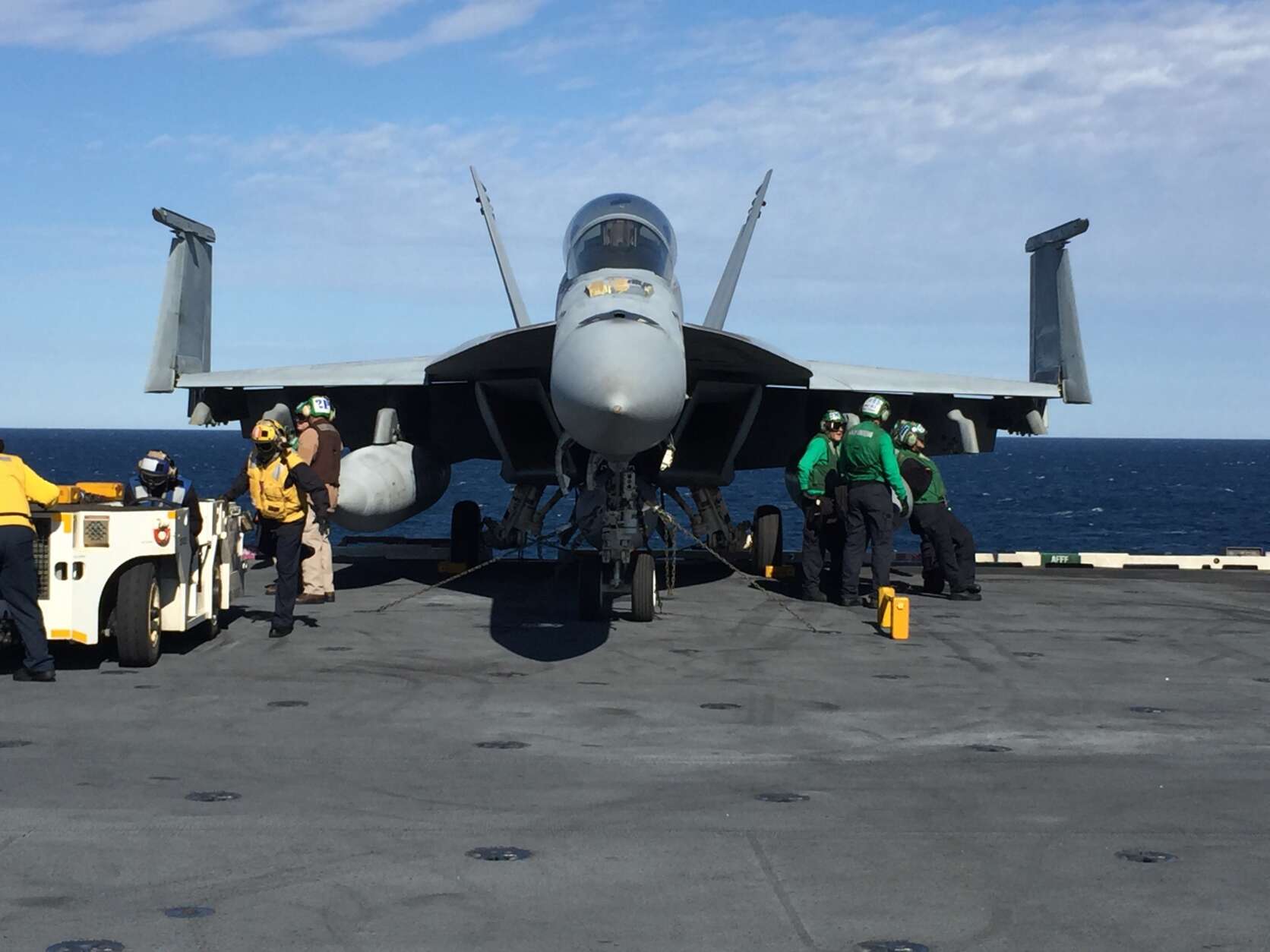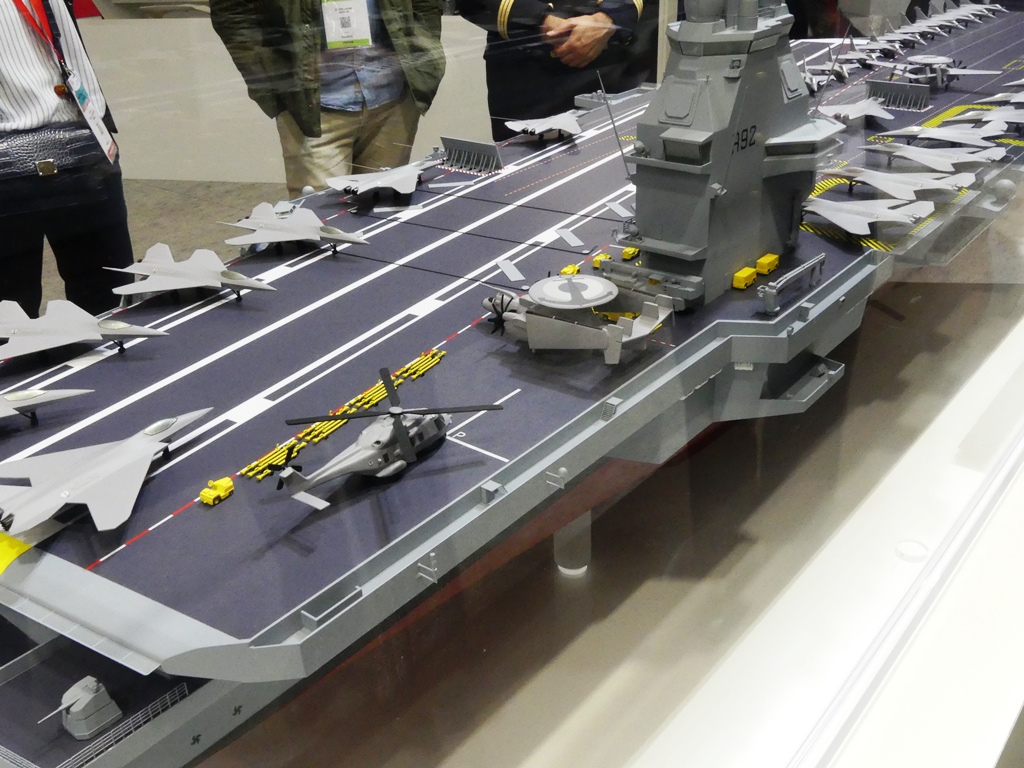Aircraft Carrier Flight Deck Layout - The Nimitz-class aircraft carrier fleet (CVN) is a group of ten nuclear-powered aircraft carriers currently in service with the United States Navy. The overall layout of these ships is similar to the earlier Kittyhawk class with a 4.5 acre flight deck on the port side with an island structure that is about 20 stories high. The angled platform used for landing is inclined about 14 degrees to port and is about 800 feet long. Four high-speed aircraft elevators, each more than 4,000 square feet, bring aircraft from the lower hangar to the flight deck.
The DCS model: Supercarrier represents the Theodore Roosevelt subclass of the Nimitz carrier, often referred to as the superior Nimitz class. The rocks available here are:
Aircraft Carrier Flight Deck Layout
The large flight deck of a Nimitz-class ship is the basis of its attack capability. In aviation, it is considered one of the most dangerous places in the world to work.
Freedom At Work: Uss George H.w. Bush Cvn 77 By Faircount Media Group
There are four catapults for 'slingshot' aircraft that launch from the hill into the air. Catapults one and two are on the bow, while catapults three and four are on the shore. Together, on average they can shoot down one plane every 20 seconds. The launch was initiated by personnel from the Integrated Catapult Control Station (ICCS), also known as the "Bubble". This is a small dome located to the left of catapults 1 and 2 on the bow and catapult 4 on the shore.
These are steam-powered catapults with two cylinders running the length of each track. A piston in each cylinder is connected to a rod that extends from each side. This is why the launch vehicle cab has a launch bar on the nose wheel that connects it to the spacecraft. During startup, high pressure steam is pumped into the cylinder. This forces the ship to accelerate, pushing the plane out of the way. The water filter slows down the flow at the end of the run so it can be returned for the next start.
These heavy-duty panels are behind each catapult to separate the high-velocity gases created by the aircraft's engines. Hydraulic cylinders lift each panel upwards at a 45-degree angle. A seawater cooling system is fitted to each to prevent damage from overheating a hot engine. It is retracted and flush with the deck when not in use.
Four steel grab cables, also known as cross pendants, span the landing area. An aircraft hook attaches to one of these cables, where the aircraft hangs about 300 feet.
Uss Nimitz Cvn 68 Crew Hi Res Stock Photography And Images
The cables are made of regular steel wire with a polyester core for flexibility. Each end is connected to the capture motor at the bottom of the deck by a purchase cable. Locking motors are hydropneumatic systems that use pistons and fluid inside a cylinder to absorb and distribute locking energy.
The cables are numbered one through four from back to front. Although there are four cables, the visual aids are calculated so that the aircraft will keep the three cables in a well-guided way. Boats short on a string run the risk of hitting the ramp at the bottom of the boat. Long distances of up to four wires risk losing the cables completely, known as 'waves'.
The hangar deck is two stories below the flight deck and spans two-thirds of the ship's length. The enclosure is divided into three sections separated by large clear doors to limit damage in case of fire or explosion.

Four large elevators provide for the movement of aircraft to the hangar port and flight deck. Each can carry two aircraft or about 150,000 pounds of equipment.
America's Most Cutting Edge Aircraft Carrier Comes To Life (pictures)
In addition to the four main elevators, there are several smaller weapons elevators located around the flight deck.
DCS: The Supercarrier module includes a ground crew that will guide you to the location of the catapult and perform the necessary steps to launch your aircraft. Additional crew members may also be placed on board by mission designers.
They include flight attendants who will guide you around the vehicle and to the launch. All taxi tips come from these staff. Other yellow shirts include flight deck officers, gear handling officers, catapult officers (gunners), catapult specialists and aircraft handling officers.
You will encounter these personnel at launch as the Catapult and Arresting Gear crews manage the load and ensure proper attachment to the Catapult shuttle. Maintenance personnel of various specialties may also be on hand to handle last minute problems with the aircraft.
A Feasibility Study Of A Persistent Monitoring System For The Flight Deck Of U.s. Navy Aircraft Carriers
Other green shirts include signal landing helicopter enlisted (LSE), cargo handling personnel, ground support equipment troubleshooters, hook navigators and fellow photographers.
They include aircraft captains and petty officers. General maintenance and servicing of aircraft is performed by these personnel. They are responsible for the safe operation of the aircraft in flight and are often referred to as the owner of the aircraft.
These personnel position the aircraft on the deck when not being taxied by the pilot. These include aircraft operators (pullers, chainsaws, etc.), tractor drivers, messengers and telephone operators, and elevator operators.

It is the fuel personnel who are responsible for the fuel safety of the aircraft and equipment on board. This is an important task as there is a dangerous risk of fire on the flight deck in crowded areas.
Photo] Tbm 1c Avengers, Sb2c Helldivers, And F6f 5 Hellcats Of Air Group 20 Are Spotted On The Forward Flight Deck Of The Fleet Carrier Uss Enterprise, Aug Nov 1944. Note 40mm Bofors Anti Aircraft Guns. |
These are Air Force personnel who manufacture, test, transport, and load weapons into aircraft. They also test and maintain aircraft weapon systems, as well as the avionics and release equipment used to deploy weapons in the air.
You will initially encounter these personnel as the final checkers inspect your aircraft for any last minute problems.
Landing Signal Officers (LSOs) are also white shirts. For more on this, see the LSO station section below.
An aircraft carrier is a floating airport, complete with all the equipment necessary to perform instrument approaches. For information on how to set this up in a mission, see the Mission Manager Features section.
Uss Enterprise (cvn 65) Aircraft Carrier
The TACAN system provides relative altitude and/or descent distance from a designated TACAN station (land, ship or aircraft). The TACAN range depends on the line-of-sight (LOS) height of the aircraft to the station, but can be 200 miles for an airborne station and 390 miles for a surface station. Each TACAN station has a three-character identifier that is used to identify the beam.
A ship's TACAN is mainly used to determine its position during navigation or to establish a bearing pattern. The TACAN is referred to as the "Father" while the Progenitor is referred to as the "Mother".
US Navy and Marine Corps carrier aircraft are equipped with the AN/SPN-41A Instrument Carrier Landing System (ICLS). It works like a traditional ILS system, but it only works for US aircraft carriers.

ICLS use is a matter of setting the aircraft's correct ICLS channel and tracking the local radius and glideslope within visual range of the aircraft's IFLOLS visual reference.
America's First Next Gen Aircraft Carrier Takes High Tech To Sea
The azimuth switch is mounted on the back of the ship, slightly below the centerline of the landing zone. The altitude switch is located above the flight deck behind the island. ICLS is referred to as "bullseye" to distinguish it from ACLS.
The AN/SPN-46 ACLS is similar to the ICLS in that it features a "shadow" that provides visual guidance information to the aircrew. But unlike ICLS, the system is gyro-stabilized to provide accurate glideslope and azimuth data regardless of ground motion in heavy seas. Up to two aircraft can be controlled by the system at a time.
Mode I. This mode provides guidance for automatic behavior. Command and error signals are sent from the ACLS to the aircraft. The aircraft then translates them into appropriate control actions to stay on track until landing. (Mode 1a is a sub-mode where the pilot selects the route after receiving an IFLOLS view.)
Condition II. This mode is similar to conventional ILS behavior. Glideslope and Azimuth errors are sent to the aircraft and displayed on the screen. The pilot manually flies the needle to stay on course.
Navy: Decommissioned Carrier Independence Leaves For Texas Scrapyard Saturday
Condition III. This is known as Carrier Controlled Behavior (CCA). No data is sent directly to the aircraft. The attitude controller provides verbal azimuth and glideslope information to the pilot, who flies the approach manually based on this guidance.
This instrument is mounted on the right side of the carrier to provide visual glidepath information to the pilot during the final phase of the approach. The system features a bright orange 'ball' that is dynamically stabilized to compensate for ship motion. The system is typically set to target a 3.5° glideslope that is 3-wire.
As the pilot approaches the pilot's preferred path, the ball appears between two horizontal communication lights. If the ball is above the datum lights, the aircraft is above the taxiway. If the ball is below the datum lights, the aircraft is under the runway.

Lens assembly. The lens assembly is a vertical box containing 12 fiber optic light cells. The position of the aircraft on the runway determines which cell is visible to the pilot.
Cvn 68 Nimitz Class
Aircraft carrier flight deck, aircraft carrier flight deck crew, picture of aircraft carrier flight deck, aircraft carrier flight deck crew colors, aircraft carrier flight deck colors, aircraft carrier deck layout, aircraft carrier flight deck material, aircraft carrier flight deck dimensions, aircraft carrier flight deck operations, aircraft carrier flight deck accidents, aircraft carrier flight deck markings, aircraft carrier flight deck videos
